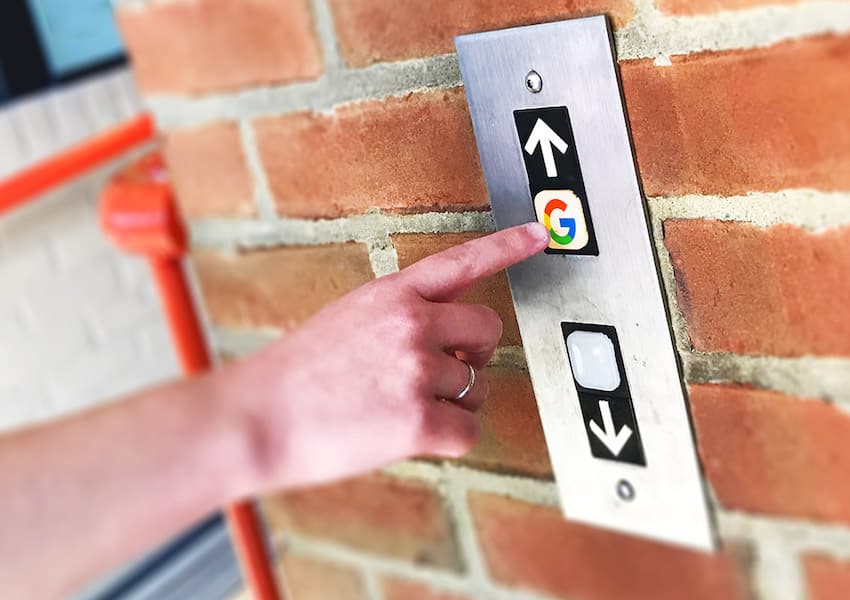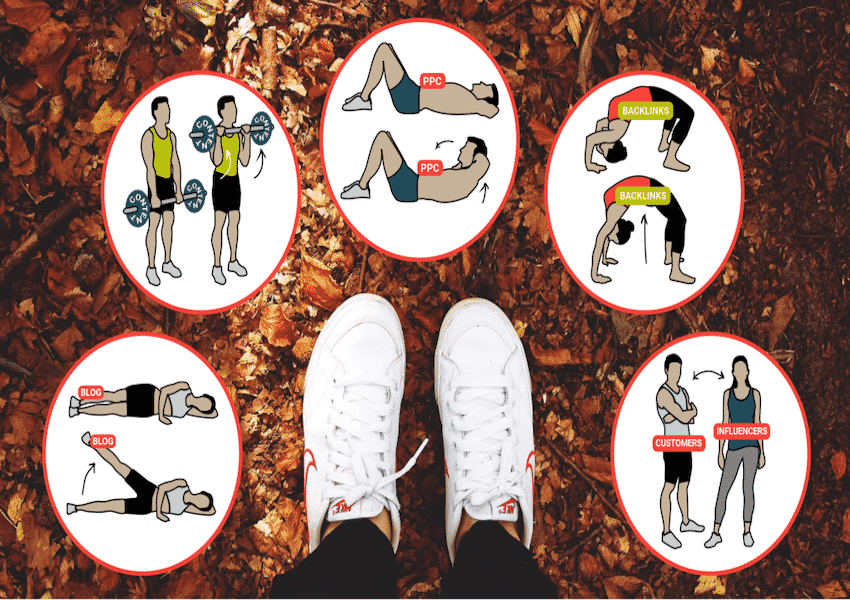Hello fellow #telecommuters! Whether you’re newly-minted or an old pro at this, there are definitely more of us today than a few weeks ago.
If you’re facing this for the first time, you may feel a bit disconnected or distracted, and if you’re used to WFH (working from home/work from home) from time to time, you may wonder if you can make it for the long haul. It will take some adjustment, but the good news is there are technical support systems available for remote collaboration that simply weren’t around even 10 years ago. We have the resources to make this work! In this post we are sharing our best tips and strategies to help you and your team make the adjustment to WFH and keep business running smoothly.
10 Working From Home Tips
Jump to the tips in the next section.
- Get up at the same time everyday.
- Get ready for the day as normal.
- Set regular hours (and stick to them).
- Create a buffer between “work” and “home.”
- Dedicate a work zone in your home.
- Limit distractions.
- Take frequent breaks.
- Talk to people!
- Don’t take work “home” with you.
- Use your vacation days.
A little background: at Pure Visibility, we’ve fostered a flexible work environment since day one. We’re allowed to work from home pretty much whenever we need, as long as the job gets done. We use popular telecommuting tools, such as Slack to communicate, Zoom to meet, and Google Docs to collaborate all day, every day. So if you WFH at Pure Visibility, it’s a contiguous experience. On top of that, a good chunk of our team has spent years running full-time businesses from their homes. We know, first hand, the challenges unique to maintaining productivity when you suddenly have to hold yourself accountable.
Take heart. The situation we all find ourselves in is uncharted, but successfully working from home is not. Here are our best tips for building a productive WFH environment for yourself and your team.
Welcome to your new normal: how to work from home like a boss.
When it comes to the actual practice of ongoing WFH, boundaries and routines will be your new best friends. Without them work and life get blurred together, and you can easily fall into a habit of always being “half on.” This is no fun for anyone around you, not healthy for your mental state, and leads to errors and oversights in your work. You will burn out fast. It’s vital to establish healthy WFH practices from the start—it’s on all of us to ensure we are able to do the work necessary to sustain business operations.
So, what does a healthy and successful WFH routine look like? We share our best advice below:
Get up every day, at the same time. It’s fair to adjust your alarm a bit because you’ve saved commute time, but do not allow yourself to sleep in just because you can.
- Get ready as if you are going to work on a casual Friday. Resist the urge to work in your jammies and take a shower at lunch. When you dress for work you prepare your brain and body for work mode. Not to mention, things will get busy midday and you’ll never get that shower.
Set regular hours and stick to them. If you are in a position that is task focused, and you’re suddenly able to work whenever you feel like it, make a schedule for yourself and be sure everyone on your team knows it.
- Create a buffer between being “at work” and “not at work.” This could be a 15-minute walk, journaling, or even catching up on social media on the sofa. Without a commute, you’ve lost transition time for your brain. Give it a new signal that you’re moving from life to work and back again.
Dedicate a space in your home for work. Make sure you’re at a desk or table, and bonus points for a door. Avoid working from your sofa or bed. If you have to work at a communal space, like the dining table, get yourself a nice large tray that fits all your immediate work needs: laptop, notepad, pens, whatever you need to get the job done. If you use Mac for work, make sure there are no battery problems for uninterrupted workflow and efficient productivity. When it’s time to quit, pack everything up on the tray and set it aside until you start the next day.
- Limit distractions. If you wouldn’t do it at your desk at the office, don’t do it when you WFH. Now is not the time to catch up on Stranger Things by streaming it in the background. Also, don’t try to squeeze in a quick load of laundry or the dishes. Save such activities for after your work day.
Set a timer and take breaks. Every 90 minutes is a great goal, but find a rhythm that works for you. Get up, go to another room; take a walk around the block if you can. In the same vein, eat lunch somewhere else, not at your designated workspace.
You may wonder why these things are important now if you normally lunch at your desk and forget to take breaks. When you work from the same place that you live, you are not varying your brain’s stimuli. You can end up sitting in the same spot for 12 hours straight without realizing it. When you do that for days on end, you can quickly feel trapped, uninspired, and unmotivated.
- Make sure you talk to another person during the day. This means picking up the phone and actually making a call (gasp) rather than texting or messaging. Lack of social interaction can lead to depression. Even if you keep up with your socials regularly, there’s no substitute for a real human. This goes for you introverts, too. Force yourself to keep those connections alive. You may find that implementing a daily tele-standup with your team is a reliable way to maintain vital interpersonal connections.
Have a hard stop for the end of your workday. When the clock strikes your designated EOB, wrap it up and walk away. This is where having a door comes in handy! It’s really easy to fall into the trap of just trying to finish up one last thing, or deciding you’re done then sliding into a Facebook or Amazon rabbit hole. Before you know it, it’s 8pm and you’re starving, and you haven’t stood in 5 hours. This isn’t to say you shouldn’t work late if you need to. But, for your normal routine, make it a habit to close up shop on time and attend to your personal life as separately as possible.
- Don’t forget to use your vacation days, even when working from home. Taking time off is crucial for maintaining mental health, preventing burnout, and improving overall productivity. Use your vacation time to relax, recharge, and come back to work feeling refreshed and energized. Additionally, consider gradually easing back into work after your vacation by starting with lighter tasks or shorter work hours to prevent post-vacation burnout and ensure a smoother transition back to your regular workload.
We’re in this together. Support is the key to successful WFH.
In many ways we are lucky to face this challenge now, when technology offers us so many options to maintain communication and daily work functions in less-than-ideal conditions. But technology cannot replace what each of us uniquely brings to the workplace table. As wonderful as it is, digital communication leaves much to be desired. Inflection, expression, and context can get lost, making it easy to unintentionally presume the worst from a hastily worded message from a colleague.
It’s time to cut each other, and ourselves, some slack. Successful and productive WFH is possible, but we need to reset our expectations appropriately and create space and support for our team members who are juggling competing priorities.

Hone your digital marketing skills from your home!
Check out our upcoming workshops—coming soon in webinar format.


 Get up every day, at the same time. It’s fair to adjust your alarm a bit because you’ve saved commute time, but do not allow yourself to sleep in just because you can.
Get up every day, at the same time. It’s fair to adjust your alarm a bit because you’ve saved commute time, but do not allow yourself to sleep in just because you can. Set regular hours and stick to them. If you are in a position that is task focused, and you’re suddenly able to work whenever you feel like it, make a schedule for yourself and be sure everyone on your team knows it.
Set regular hours and stick to them. If you are in a position that is task focused, and you’re suddenly able to work whenever you feel like it, make a schedule for yourself and be sure everyone on your team knows it. Dedicate a space in your home for work. Make sure you’re at a desk or table, and bonus points for a door. Avoid working from your sofa or bed. If you have to work at a communal space, like the dining table, get yourself a nice large tray that fits all your immediate work needs: laptop, notepad, pens, whatever you need to get the job done. If you use Mac for work, make sure there are no
Dedicate a space in your home for work. Make sure you’re at a desk or table, and bonus points for a door. Avoid working from your sofa or bed. If you have to work at a communal space, like the dining table, get yourself a nice large tray that fits all your immediate work needs: laptop, notepad, pens, whatever you need to get the job done. If you use Mac for work, make sure there are no  Set a timer and take breaks. Every 90 minutes is a great goal, but find a rhythm that works for you. Get up, go to another room; take a walk around the block if you can. In the same vein, eat lunch somewhere else, not at your designated workspace.
Set a timer and take breaks. Every 90 minutes is a great goal, but find a rhythm that works for you. Get up, go to another room; take a walk around the block if you can. In the same vein, eat lunch somewhere else, not at your designated workspace.
 Have a hard stop for the end of your workday. When the clock strikes your designated EOB, wrap it up and walk away. This is where having a door comes in handy! It’s really easy to fall into the trap of just trying to finish up one last thing, or deciding you’re done then sliding into a Facebook or Amazon rabbit hole. Before you know it, it’s 8pm and you’re starving, and you haven’t stood in 5 hours. This isn’t to say you shouldn’t work late if you need to. But, for your normal routine, make it a habit to close up shop on time and attend to your personal life as separately as possible.
Have a hard stop for the end of your workday. When the clock strikes your designated EOB, wrap it up and walk away. This is where having a door comes in handy! It’s really easy to fall into the trap of just trying to finish up one last thing, or deciding you’re done then sliding into a Facebook or Amazon rabbit hole. Before you know it, it’s 8pm and you’re starving, and you haven’t stood in 5 hours. This isn’t to say you shouldn’t work late if you need to. But, for your normal routine, make it a habit to close up shop on time and attend to your personal life as separately as possible.

